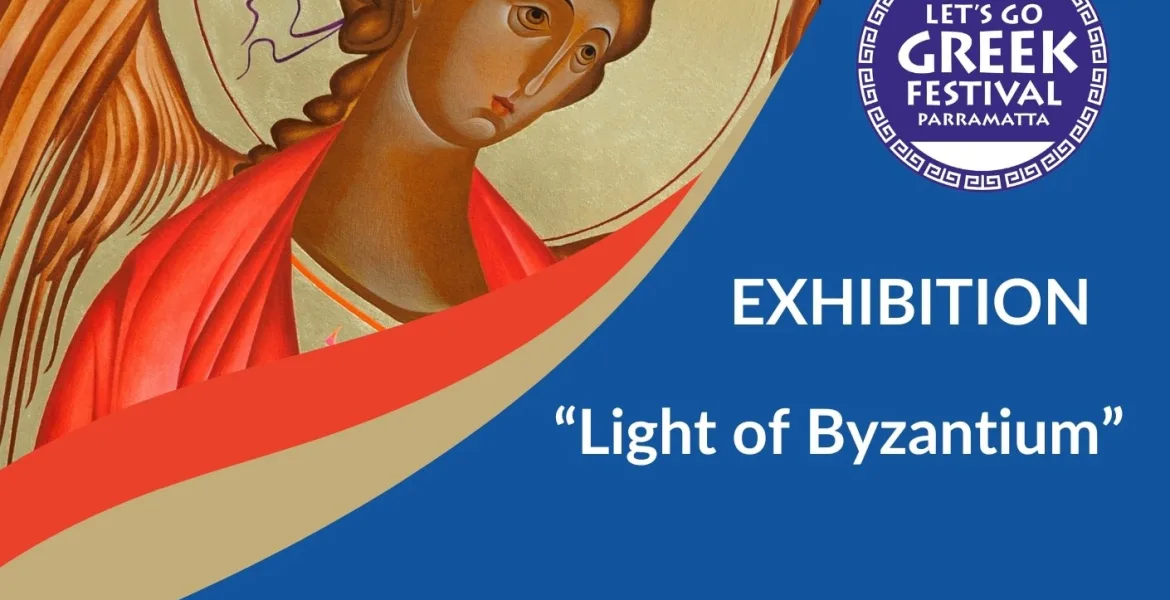
Byzantium has been, amongst many things, an inspiration to one of the world’s most interesting art traditions: the legacy of iconography. The light which is so important for the latter’s symbolic language is ultimately the light of Byzantium, and this in turn is the envisioned and experienced Light of the Kingdom of God. Byzantium was a sociopolitical endeavour that aspired to embody the Uncreated Divine Light, God-as-Light, in a variety of human life-forms – art being perhaps the most privileged and conspicuous.
This rationale is what the exhibition “Light of Byzantium” at the Greek Orthodox Church of St Ioannis, Parramatta, intends to convey from Sunday 10 November until Saturday 16 November 2023, based mainly on works of acclaimed iconographer and painter Uros Todorovic/Ouresis Todorovich. Furthermore, a major thematic aspect of the exhibition is the globality that the light of Byzantium brought out in artistic terms, and this is precisely what a certain set of Todorovic’s works are supposed to reflect. As the curator of this exhibition, I would like to call this set, which comprises four paintings/icons, “The Global Faces of Christ”.
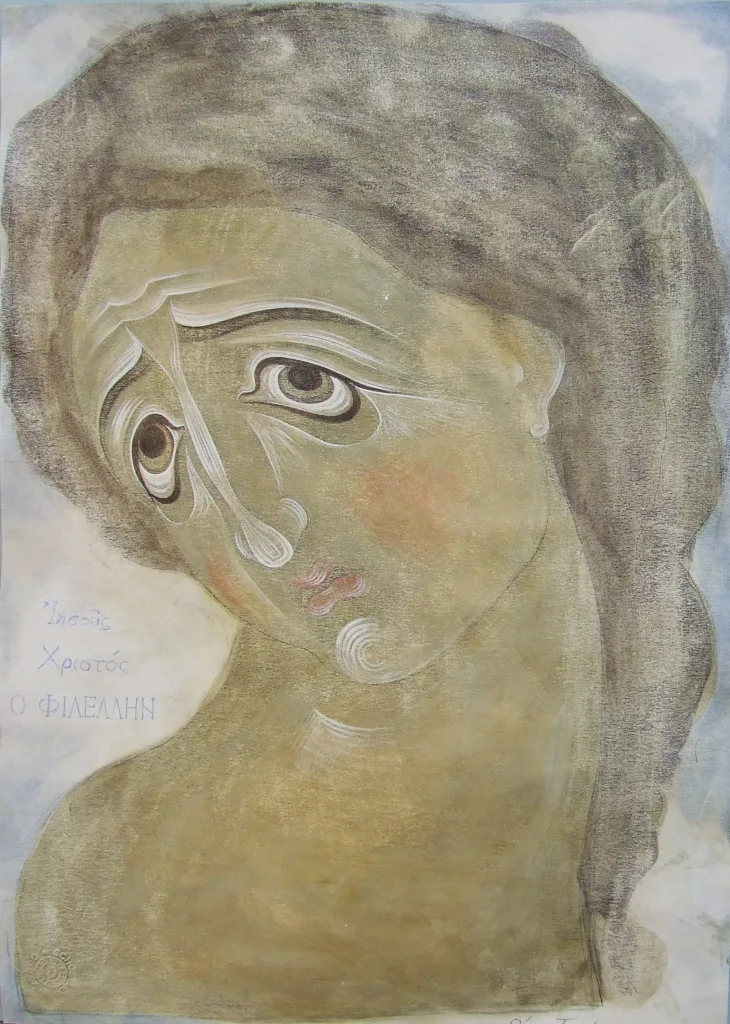
Christ the Philhellene
A face full of life and youth, grace and colour; a bittersweet face, reflecting what the late professor Dimitrios Liantinis used the call the sweet melancholy of the Hellenes. This is what Todorovic paints in 2009 as the face of Christ the Philhellene. Todorovic, of course, is a Serbian who adopted Hellenism as his cherished cultural space of becoming, and thus it is only natural that he integrates in such a pronounced way the aesthetics of the Hellenic with the foundational hierophany of Christianity. Nevertheless, one should not forget that he does extend a given tradition, and an early one – even pre-Byzantine, one could say – whereby Christ is depicted in the form of a youth, Orpheus, a philosopher, and so forth.
But now, that is, after so many centuries of Byzantine art, he achieves this extension by bringing out the Hellenicity of the relevant tradition. And how does he manage to do this? It is predominantly through the rhythm, the curvy plasticity of the figure, and the physicality of the person depicted. In other words, this is hardly an otherworldly Divine Christ; but then, the placement of the iconographic theme within a cloudy background cannot but hint at the otherness of His perfect humanity…

Aboriginal Christ
In art practice, there are times when the work turns out in a way it is not intended to. This is the case with “Aboriginal Christ” (2009) by Todorovic. The artist was aiming for something different, something much closer to his own expectations, which means that he just wanted to reduplicate his sameness, whereas the work turned out to be about otherness, about what the artist hadn’t anticipated. Although this is more or less relevant to any artistic creation, sometimes it takes on a radical character and the work surprises even the artist themselves. In this sense, Todorovic stumbled, so to speak, upon Aboriginal Christ; the latter happened to emerge from the performance of his creativity.
The work is basically the transformation of a different work – the otherness of a sameness, to put it differently – which required from the artist a great amount of improvisation. Thus, I would define “Aboriginal Christ” as a feat of sheer performativity, which establishes itself as a highly original – yet traditionally patterned – icon. The latter is all about a face, the Divine-Human face, that is manifested through a play of and with white: the red sand of the Australian desert has turned into the contours of Divine Glory. And right in the middle the carved eyes of the Son of Man: the appearance of the raw physicality and vulnerability of our nature – a nature common to Indigenous and non-Indigenous people…
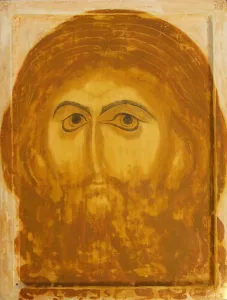
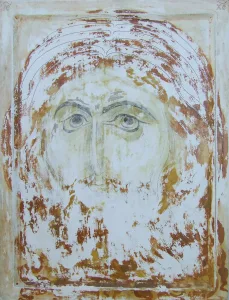
Wounded Christ
To some extent, what we see in “Aboriginal Christ” we also encounter in “Wounded Christ” (2008). The artist had produced a different work, which subsequently he wanted – for reasons not totally transparent to himself either – to take somewhere else and bring out something that the first “version” was hiding, silencing or repressing. In this sense, “Wounded Christ” is the deconstruction – in a Derridean manner – of the “Sun of Righteousness” (2008). It is all the more intriguing that in terms of technique, “Wounded Christ” is indeed a wounded version of “Sun of Righteousness”, and only as such it manages to achieve a healing, so to speak, result.
Being a Serbian and, especially, growing up in the late 1990s, Todorovic could only think of righteousness as the ethical imperative posed by the trauma of war and desolation … That is why he turns the righteous Lord into the Wounded Christ, for it is He who suffers in the person of all His people and He who will vindicate them in His loving providence. Besides, can’t you see the wounds on His humanity? Can’t you see the Divine restoration in His gaze? Once again, Todorovic articulates in a subtle and innovative iconographic manner traditional Christological truths…
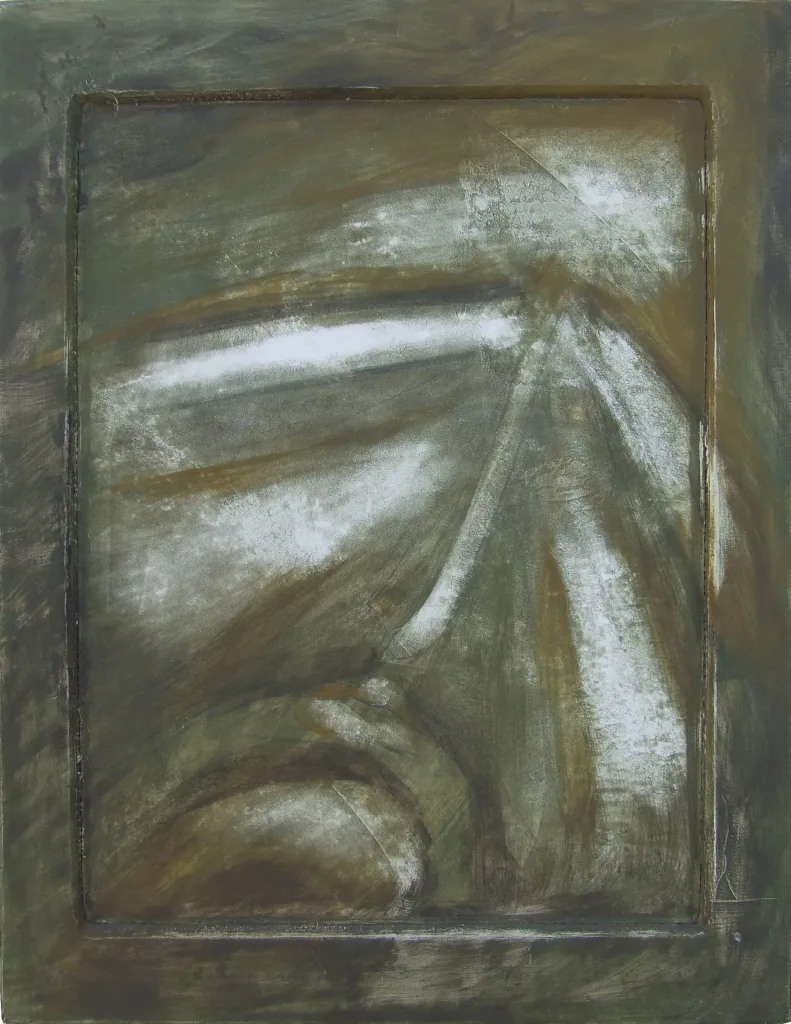
Cosmic Christ/Suffering Logos
With his work “Cosmic Christ/Suffering Logos” (2009) Todorovic reaches a certain point of maturation in his artistic career journey. This is a true masterpiece, a tour de force! Traditional iconography and abstract modernism, contemplative mood and cosmological exploration, simplicity and comprehensiveness, suggestiveness and power, all blend in and integrate so remarkably in this icon. To put this otherwise, I would dare say that if you don’t recognise Christ in this icon, if you cannot relate to it in reverence, and if you are unable to respond to its immersive calling, then most likely you are a foreigner to the spirit of Orthodox iconography.
A version of this icon (2021) has travelled and is being displayed at the Museum of Russian Icons in Clinton, Massachusetts, USA, celebrating the creativity and originality of modern Orthodox iconography. And rightly so, for both in terms of form and in terms of content it puts forward of sense of globality that is not at all common in traditional icons. The latter, undoubtedly, exhibit a universal aura, but in this instance what we see is the human face assuming – in the person of the Logos – the global proportions of our cosmological experience and perspective. In Christ, especially in his suffering, the macrocosm and the microcosm have become one!
If you want to see these, as well as other works by Uros (Ouresis) Todorovic, you can visit the exhibition “Light of Byzantium” at the Greek Orthodox Church of St Ioannis Parramatta, 165 George St, Parramatta, from Sunday 10 September, 11:00am until Saturday 16 September, 6:00pm. The exhibition, co-organised by the Let’s Go Greek Festival Parramatta in conjunction with the Greek Orthodox Archdiocese of Australia and the Hellenic Lyceum of Sydney, is curated by Dr Vassilis Adrahtas.
ABOUT | INSIGHTS INTO GLOBAL ORTHODOXY with Dr Vassilis Adrahtas
“Insights into Global Orthodoxy” is a fortnightly column that features opinion articles that on the one hand capture the pulse of global Orthodoxy from the perspective of local sensitivities, needs and/or limitations, and on the other hand delve into the local pragmatics and significance of Orthodoxy in light of global trends and prerogatives.
Dr Vassilis Adrahtas holds a PhD in Studies in Religion (USyd) and a PhD in the Sociology of Religion (Panteion, Athens). He has taught at several universities in Australia and overseas. Since 2015 he has been teaching ancient Greek Religion and Myth at the University of New South Wales and Islamic Studies at Western Sydney University. He has published ten books. He has extensive experience in the print media as editor-in-chief, and columnist, and for a while he worked as a radio producer. He lives in Sydney, Australia, his birthplace.

